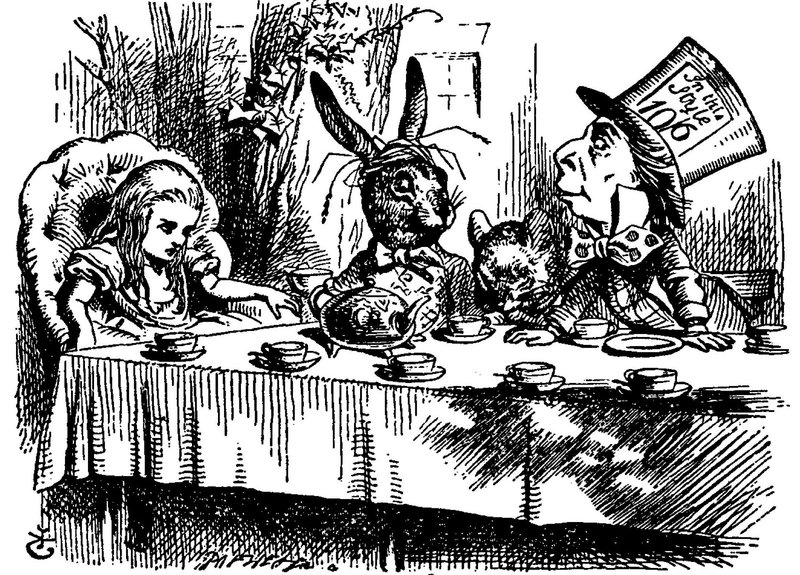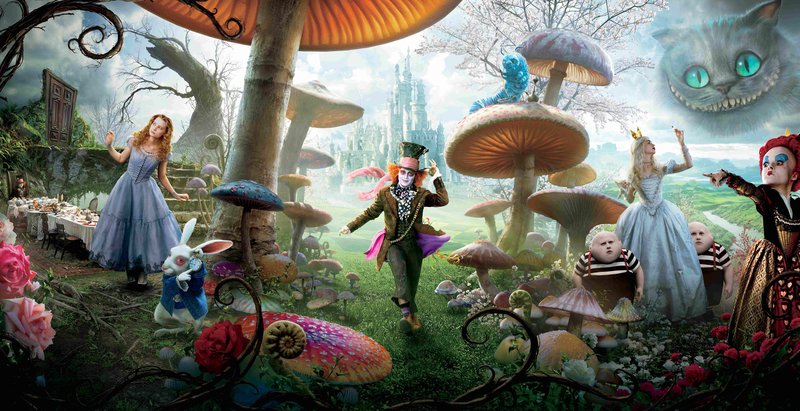Alice in Wonderland still going strong after 150 years
The book that gave us one of the West's foremost cultural icons celebrates a century and a half of entertaining generations of children and inspiring works of literature, theatre, art and film
That only the Bible and Shakespeare are cited more often in western culture shows the popularity of Alice in Wonderland. The bizarre masterpiece of children's literature by Charles Lutwidge Dodgson –better known as Lewis Carroll– is 150 years old this month, and its continued fame proves that its exploration of infant psychology has stood the test of time.
Yet, on the face of it Carroll was the most unlikely children's author imaginable. A devoutly religious professor of mathematics, Carroll spent his life –unmarried and childless– cloistered in the rarefied intellectual atmosphere of Oxford University. Nevertheless, a boat trip on the River Thames with a friend and his family led Charles to improvise a story for the children about a girl who dreams about following a white rabbit into a world full of marvels. Alice's Adventures in Wonderland (as the little used original title goes) was born and the rest, as they say, is history. Charles went on to publish the story as an illustrated book in 1865. Immediately popular, it gradually became established in the literary canon, prompting the sequel Through the Looking-Glass, and What Alice Found There, in 1871. Since then the tale, with its whacky, memorable characters and surreal situations has become a mainstay of western culture, spawning hundreds of adaptations in just about all of the artistic disciplines.
Of course, no discussion of Alice in Wonderland, as the book came to be commonly known, can avoid veering into the field of psychology. Alice finds herself in an unintelligible world that requires her to constantly adapt to unforeseen and mind-blowing situations that have more than a little to say about the process of growing up. Above all, the novel reveals the consternation children feel in a world in which they do not know the rules. Yet, like most children, Alice adapts quickly to the reality that surrounds her and learns to cope, even standing up for herself in defence of her individual rights and faces down the arbitrary and barely-justified authority imposed on the world into which she has awoken. In other words, during the course of the novel, Alice learns what it is to grow up.
Icon of western culture
Alice has inspired hundreds of versions from all artistic disciplines and has been translated into 174 languages
With its surrealist overtones and absurd extravagance, Alice in Wonderland seems to belong more to the 20th century world of Freud and Kafka than the 19th century naturalism of Hugo or Dickens. Yet, the likes of Jonathan Swift's Gulliver's Travels or Laurence Sterne's Tristam Shandy, with their bewildering takes on reality actually predate Alice. Nevertheless, the story of an individual protagonist faced with a world in which everything is relative (one moment Alice is reduced to a miniature version of herself, the next she is transformed into a giant) could not be more modern.
The influence of Alice on western culture is enormous, rivalling that of the likes of Mickey Mouse or Snoopy. Films, ballets, songs, plays have drawn on Lewis Carroll's invention in their scores, while the Oxford don also influenced a range of 20th century writers from Auden and Chesterton to Nabokov and Borges. US composer Leonard Bernstein, for example, used the books to educate his children and it is true that the writer's influence surpasses the literary world as a source of inspiration for linguists, philosophers, psychoanalysts and scientists.
The first Catalan translation of the book was by Josep Carner in 1927 with illustrations by Lola Anglada and published by Mentora as, Alícia en terra de meravelles. An updated translation by Víctor Compta came out in 1990, published by Empúries with the title, Les aventures d'Alícia, which was followed six years later by Barcanova's Alícia al país de les meravelles, with the translation by Salvador Oliva, the latter two with the original illustrations by John Tenniel.
Despite being translated into 174 different languages, the challenge to understanding thrown up by Alice in Wonderland remain the same all over the world. Talking about his book, Carroll's explanation went as follows: “The `Why?' cannot, and need not, be put into words. Those for whom a child's mind is a sealed book, and who see no divinity in a child's smile, would read such words in vain: while for any one that has ever loved one true child, no words are needed.”
Was Carroll a paedophile?
Neil StokesThere has always been a rumour that the makers of the children's programme, The Magic Roundabout, were out of their minds on drugs. I also have my suspicions about the makers of the Tellytubbies. Just how high Lewis Carroll was when he wrote Alice in Wonderland is also a question that has challenged some of the greatest minds on the internet. Yet doubts about the proclivities of the Oxford don who was fascinated by little children –especially the female kind decked out in petticoats and ribbons– to my mind is a more interesting issue. So, was Lewis Carroll a paedophile?
It is not as provocative a question as it seems. This year, to coincide with Alice in Wonderland's 150th anniversary, the BBC aired a documentary called The Secret World of Lewis Carroll that revealed the existence of a photograph of a naked girl (the real Alice's older sister), presumably taken by Carroll. One contributor in the documentary calls Carroll a “heavily repressed paedophile”, while the great-granddaughter of Alice Liddell (who inspired the character of Alice) says: “I do think he was a strange man, and people who say he wasn't and are totally whitewashing him are wrong.”
Not enough evidence to have Carroll thrown into prison, especially in an age when the age of consent was 12. We will probably never know the truth about Carroll's sexual preferences. Yet, for a society seemingly obsessed by the threat of child abuse, exploring Carroll's life and work is worth it for what it can tell us about ourselves.


